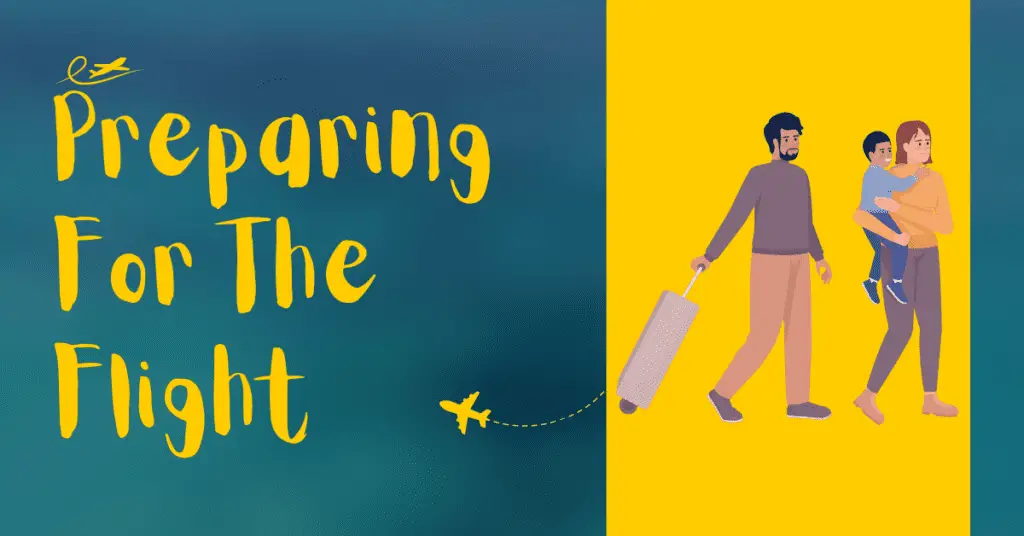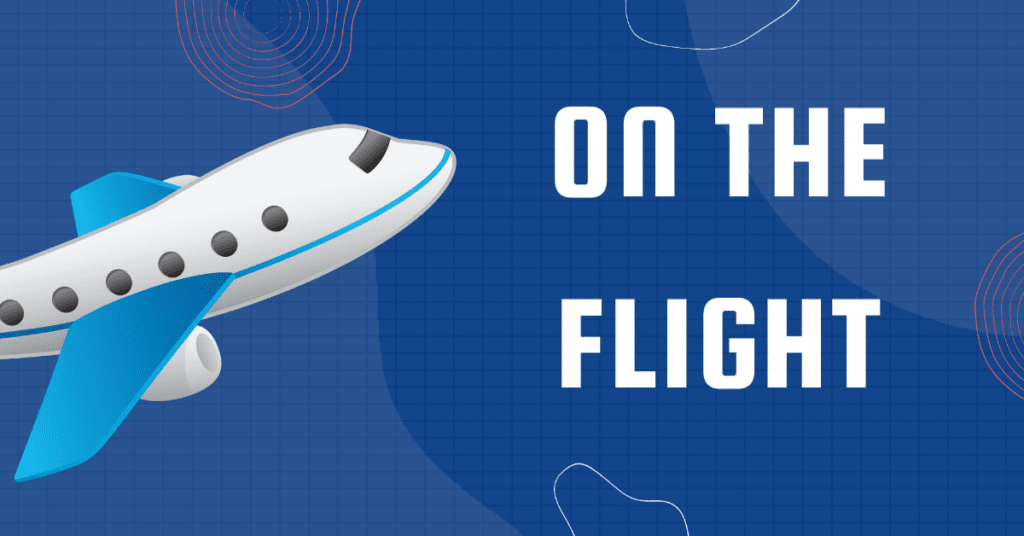Flying with a toddler takes the challenge of flying to a whole new level. The closed spaces, unfamiliar noises, and change in routine can unsettle even the most placid toddler. Yet, for families looking to explore the world together, or perhaps visit distant loved ones, flying is often a necessary part of the journey.
This article aims to provide practical tips and strategies to help make your next flight with your little one more manageable. We will cover everything from booking considerations and packing essentials to managing meal times, handling tantrums mid-flight, and navigating layovers. Each section of this article is designed to help parents feel more prepared and confident when travelling by air with their toddlers. As anyone who has travelled with a young child can attest, preparation and flexibility are the keys to a smoother journey.
Understanding the Needs of a Toddler
Before we delve into the specifics of flying, it’s crucial to have a solid understanding of what being a toddler entails. Toddlers are in a unique stage of development. They’re learning about the world around them at a fast pace, developing language skills, and asserting their independence whenever they can. This is a wonderful, albeit challenging, time for both children and their parents.
When it comes to travel, a toddler’s needs are quite specific. They thrive on routine and familiarity, which are often disrupted during trips. Comfort, entertainment, and nutrition become pivotal in managing a toddler’s needs. Additionally, their sleep schedule must be factored into your travel plans, as sleep-deprived toddlers can become overtly cranky and challenging to handle.
- Routine: Having a predictable schedule provides toddlers with a sense of security. While it’s nearly impossible to maintain their usual routine while travelling, you can recreate parts of it to help them adjust to the new environment.
- Familiarity: Familiar toys, snacks, or even a favourite blanket can offer comfort in unfamiliar surroundings. This can be especially beneficial in calming down an unsettled toddler.
- Entertainment: Toddlers have a short attention span and need regular changes in activities to keep them engaged. Planning for a variety of activities is critical when travelling.
- Nutrition: Regular, healthy snacks and meals are necessary to keep a toddler’s energy levels balanced and prevent meltdowns due to hunger.
- Sleep: Adequate rest is critical for toddlers. Tired toddlers can be fussy and more prone to tantrums. If possible, align travel times with your toddler’s nap or bedtime.
- Jet Lag: Be prepared ahead of time with strategies to deal with jet lag which can affect children worse than adults.
By understanding these needs, you can better prepare for and navigate the challenges of flying with a toddler. In the following sections, we will discuss how to factor these needs into your travel plans.

Preparing for the Flight
A successful flight with a toddler starts long before you reach the airport. The preparations begin with thoughtful booking considerations and careful packing to ensure a smooth journey.
A. Booking considerations
- Flight Timings: Align your flight time with your toddler’s sleep schedule, if possible. Overnight flights or flights during nap time can allow your toddler to sleep for a significant part of the journey, making the flight more manageable for both of you.
- Seating Arrangements: If your budget allows, consider booking an extra seat for your toddler. This gives you more space and allows your toddler to lie down, play, or sleep more comfortably. Additionally, choosing aisle seats can make bathroom trips and stretching your legs easier.
B. Packing Essentials
- Snacks and Drinks: Pack plenty of snacks that your toddler enjoys and can eat without much mess. Remember to carry water or your toddler’s favourite drink (complying with airport regulations) to keep them hydrated.
- Comfort Items: Familiar items can help calm a toddler in new and unfamiliar settings. Pack a favourite toy, blanket, or even a set of pajamas that your child associates with sleep.
- Change of Clothes: Accidents happen, especially with toddlers. Pack a few extra sets of clothes for your child and a spare top for yourself in your carry-on luggage.
- Medications: If your child needs specific medications, ensure you have them in your carry-on. Also, consider packing a small first-aid kit with band-aids, antiseptic wipes, and any other necessities you might need.
Remember, preparation is key when travelling with a toddler. The more you plan and prepare, the better equipped you will be to handle any situations that arise during your journey.
At the Airport
Navigating through the airport can be quite an adventure for toddlers. The bustling crowds, announcements over loudspeakers, and the sheer size of the place can be both exciting and overwhelming. Managing this stage of the journey can set the tone for the rest of your trip.
A. Managing Airport Security with a Toddler
Security checkpoints can be stressful. Prepare your toddler for this process in advance. Explain in simple terms what will happen, like taking off their shoes or placing their toys on a conveyor belt. Try to keep the mood light and treat it like a game.
B. Utilizing Airport Facilities
- Play Areas: Many airports offer play areas for children. These are perfect for tiring your toddler out before the flight, and they offer a welcome distraction from the waiting time.
- Family Restrooms: If available, use the family restrooms. They are generally larger and offer more privacy, making diaper changes or bathroom breaks less of a hassle.
C. Pre-Boarding Activities
Many airlines offer families the opportunity to board early. However, this can mean additional time on the plane. Instead, let your toddler use up some energy by walking or running around in the boarding area while you wait for the final call to board.
Remember, each step at the airport is a new experience for your toddler. Keep a positive attitude, and your toddler is likely to follow suit.
Ideas For Pre-Boarding Activities
- Scavenger Hunt: Create a simple scavenger hunt with items commonly found in an airport terminal (e.g., a red suitcase, a pilot, a souvenir shop). This activity can keep your toddler entertained and engaged while waiting for boarding.
- Walk Around: Take your toddler for a walk around the terminal. This will allow them to burn off some energy before sitting on the plane for an extended period.
- Story Time: Bring a favourite book or two and find a quiet corner for story time. This can help calm your toddler and get them in a relaxed mindset for the flight.

On the Flight
Once on board, the real test begins. This section will cover strategies to keep your toddler comfortable, entertained, and well-fed throughout the flight.
A. Comfort and Entertainment
- Use of Electronics: While limiting screen time is crucial at home, flights are an exception. A tablet with favourite shows, games, or movies can be a lifesaver during long flights. Remember to download content beforehand as internet may not be available or reliable on the flight.
- Non-Electronic Entertainment: Along with electronic entertainment, bring non-electronic items such as books, colouring supplies, or small puzzles. Rotating activities can help hold your toddler’s attention.
B. Managing Meal Times
Airline meals may not be suitable or liked by your toddler. Pack sufficient snacks and easy-to-eat foods like sandwiches, fruits, or cheese cubes. Remember to bring a sippy cup to make drink service less messy.
C. Handling Sleep and Rest Times
Bring a travel pillow or blanket to make your toddler’s seat more comfortable for sleeping. If it’s their usual bedtime, follow the routine as closely as you can, such as reading a bedtime story or changing them into their pajamas.
D. Dealing with Ear Pressure During Takeoff and Landing
Ear pressure changes during takeoff and landing can be uncomfortable for toddlers. Encourage them to swallow by drinking, sucking on a pacifier, or for older toddlers, chewing on a snack.
Navigating a flight successfully requires flexibility and a good amount of patience. Remember, every child is different, so what works for one might not work for another. The goal is to ensure your child is as comfortable and engaged as possible throughout the journey.
Handling Tantrums Mid-flight
Despite your best efforts, it’s possible that your toddler may have a tantrum during the flight. It’s crucial to remember that this is a normal part of toddler behaviour, and your fellow passengers understand this too. Here are some strategies to deal with mid-flight tantrums:
A. Proactive Strategies
- Distract and Divert: If you sense a tantrum brewing, distract your toddler. Start a new activity, point out interesting things outside the window, or even take a short walk down the aisle (if seatbelt signs are off).
- Maintain Calm: Toddlers can pick up on your anxiety. Try to remain calm and composed even if your toddler is having a tantrum. A calm demeanour can help reassure your toddler and might help them settle down.
B. Reactive Strategies
- Comfort and Assure: During a tantrum, your toddler may feel overwhelmed. Hold them, speak in a soothing voice, and reassure them that everything is okay.
- Time-Out: If possible, a short time-out might be beneficial. This could mean simply sitting with your toddler in their seat, away from other distractions, until they’ve calmed down.
- Seek Help: Don’t hesitate to seek help from the flight attendants. They are experienced in handling these situations and might have additional solutions or provide small distractions that help.
Remember, tantrums are a normal part of toddler life. They can happen anywhere, even at 30,000 feet. The key is to stay calm, offer comfort, and remember that this too shall pass.

Making the Most of Layovers
Layovers can often be a blessing in disguise when you’re traveling with a toddler. They provide an opportunity to stretch your legs, explore a new environment, and break the monotony of a long journey.
A. Using Layover Time for Active Play
- Look for Play Areas: Many airports have dedicated play areas for children. These are great places to spend layover time as your toddler can expend energy in a child-friendly space.
- Explore the Airport: Go on a mini adventure with your toddler. This can involve riding the airport tram, observing planes take off, or simply walking around different terminals.
B. Resting During Layovers
- Find Quiet Areas: Some airports have quieter, less crowded areas, or even rest zones where you can relax. This can be a good spot for your toddler to nap, especially after a playful stint.
- Take Advantage of Airport Lounges: If you have access to an airport lounge, it can offer a more comfortable place to relax, often with better seating and food options.
Layovers need not be viewed as a hassle but rather as an opportunity to make the trip more enjoyable for your toddler (and you). By effectively managing layover time, the journey can become part of the destination.
Post Flight
You’ve navigated the flight and are now ready for your next adventure or perhaps a well-deserved rest. But the journey isn’t quite over. Here are some tips for managing the post-flight phase with your toddler:
A. Collecting Luggage
- Be Patient: Baggage claim areas can be crowded and may involve waiting, which can be hard for a tired toddler. Keep some snacks or a favourite toy handy to keep your child occupied during this time.
- Utilize Strollers: If you’ve gate-checked a stroller, you can use it to make the walk to baggage claim more comfortable for your toddler. If not, consider using an airport luggage trolley as a makeshift stroller (with careful supervision, of course).
B. Managing Post-Flight Energy Levels
- Expect some Disruption: Even with the best planning, disruptions to your toddler’s sleep and meal schedules are likely. They might be over-excited or tired. Be patient, and give them some time to adjust.
- Maintain Hydration and Nutrition: Make sure your toddler is well-hydrated and fed after the flight. This will help them recover from the journey and adjust to the new environment.
- Plan for Rest: If it’s close to nap time or bedtime, try to create a calming environment to encourage sleep. If your toddler is wide awake, engage them in a quiet activity to help them wind down.
The end of the flight doesn’t mean the end of the journey. By thoughtfully managing this stage, you can help ensure a smooth transition to the next part of your adventure, whether that’s exploring a new place or returning home.
Finals Thoughts on Flying With A Toddler
Travelling with a toddler on a flight can be a challenging experience, but with careful preparation and a patient approach, it can also be a rewarding one. The key is to understand your toddler’s needs, prepare accordingly, and remain flexible throughout the journey.
Flying doesn’t have to be a stressful ordeal. In fact, it can be a memorable part of your family adventure. Remember, at the heart of it, the flight is temporary but the memories of the destination can last a lifetime. With these tips, we hope you feel more confident about your next flight with your toddler.
Happy travels!

